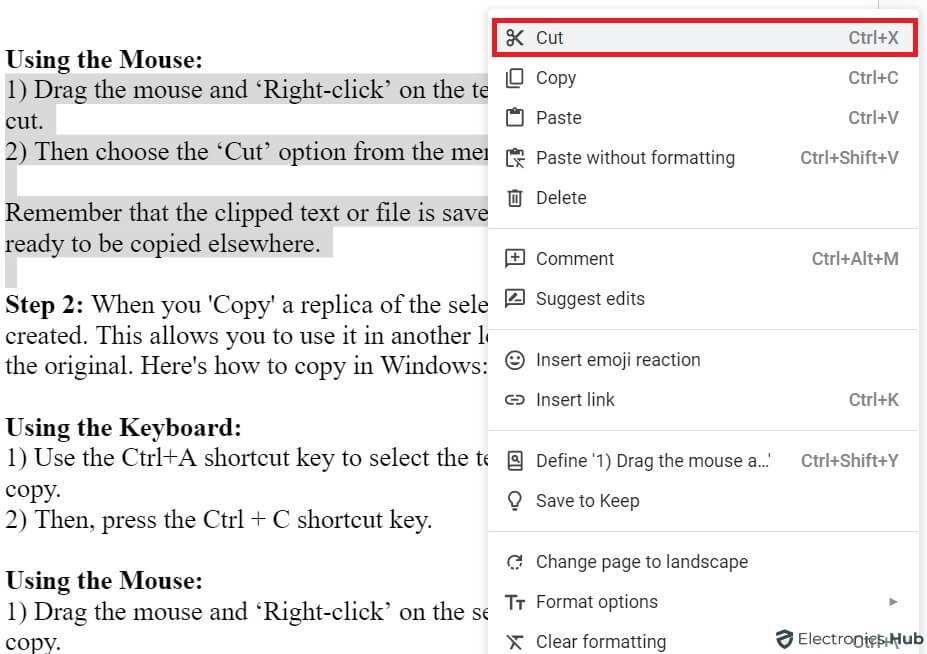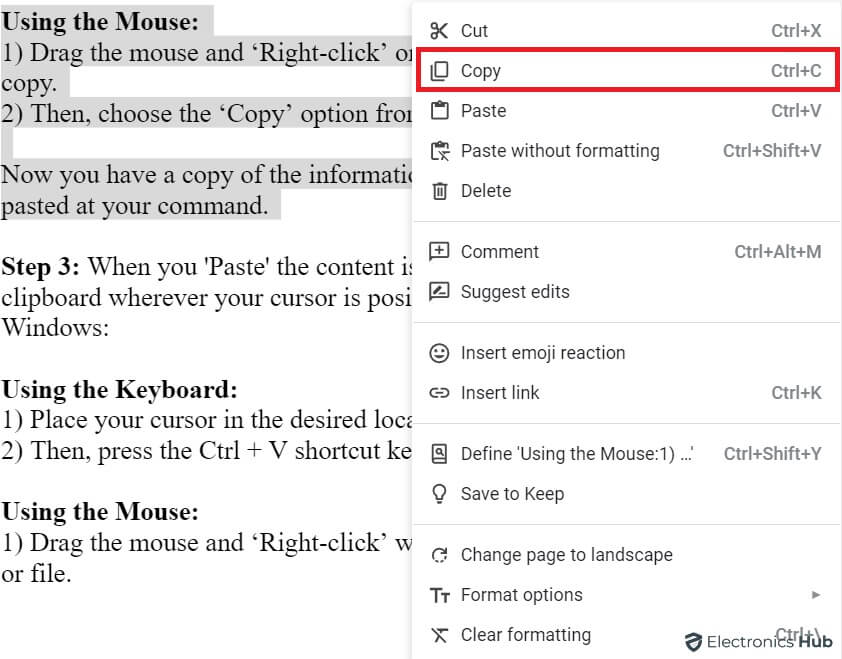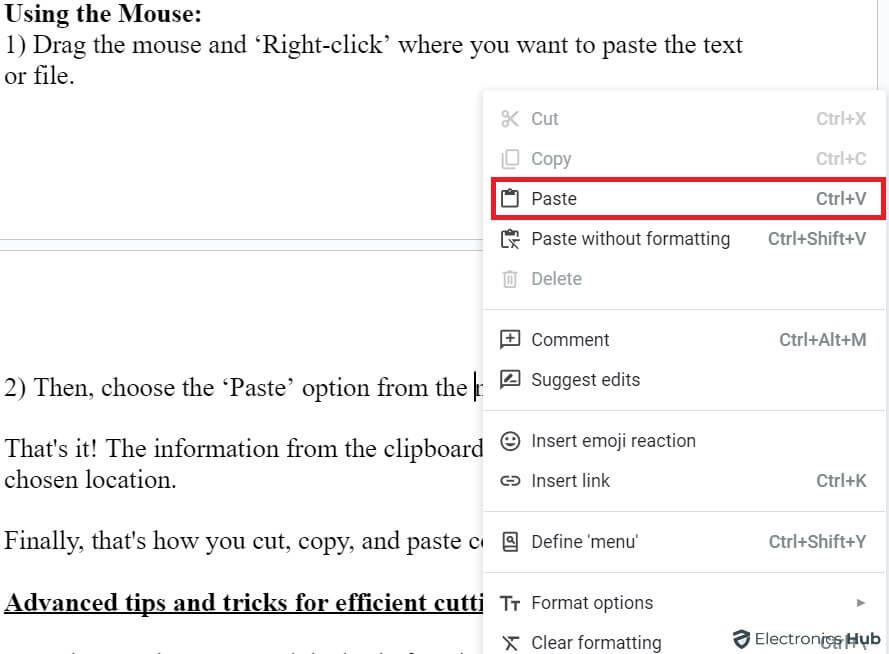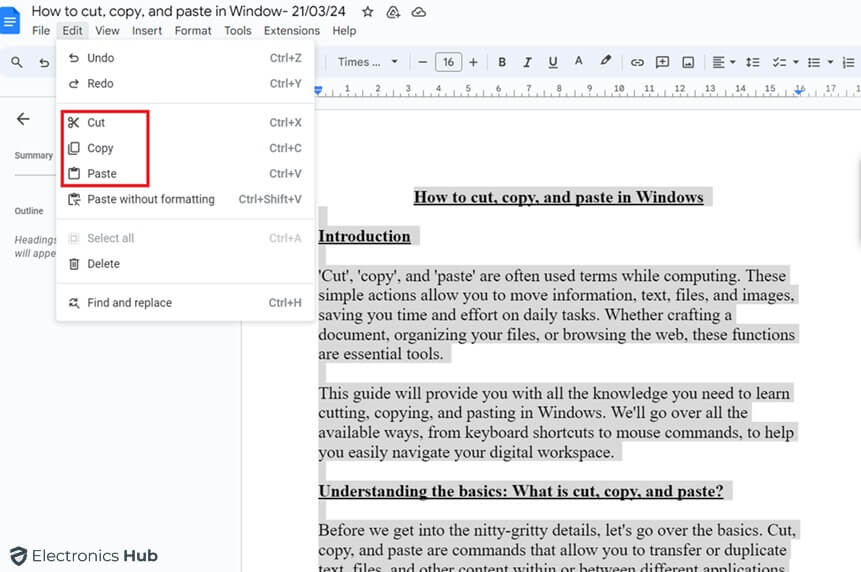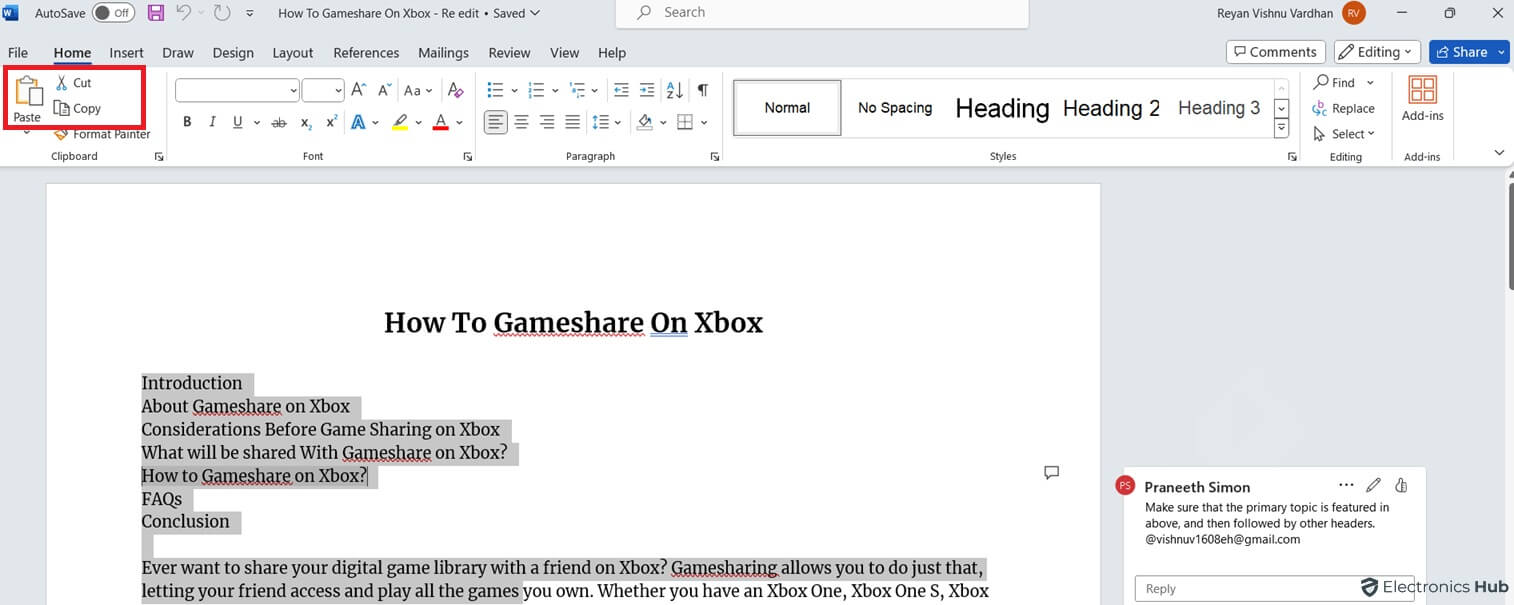‘Cut’, ‘copy’, and ‘paste’ are often used terms while computing. These simple actions allow you to move information, text, files, and images, saving you time and effort on daily tasks. Whether crafting a document, organizing your files, or browsing the web, these functions are essential tools.
This guide will provide you with all the knowledge you need to learn cutting, copying, and pasting in Windows. We’ll go over all the available ways, from keyboard shortcuts to mouse commands, to help you easily navigate your digital workspace.
Outline
Toggle- Understanding the Basics: What is Cut, Copy, and Paste?
- How to Cut, Copy, and Paste in Windows?
- Advanced Tips and Tricks for Efficient Cutting and pasting
- Alternatives for Cutting and Copying in Windows
- Advantages of Cutting and Pasting in Windows
- Tips to Improve your Cutting and Pasting Skills
- Frequently Asked Questions
- Conclusion
Understanding the Basics: What is Cut, Copy, and Paste?
Before we get into the nitty-gritty details, let’s go over the basics. Cut, copy, and paste are commands that allow you to transfer or duplicate text, files, and other content within or between different applications on your Windows computer.
When you ‘cut’ anything, you move the selected content from its original position to the clipboard, a temporary storage space. In contrast, ‘copy’ creates a replica of the selected item in the clipboard, retaining the original content. Finally, ‘paste’ allows you to paste content from the clipboard into a new location.
How to Cut, Copy, and Paste in Windows?
Step 1: When you ‘Cut’ it takes a piece of information and sets it aside for later use in a different location. Here’s how to cut in Windows:
Using the Keyboard
1. Use the Ctrl+A shortcut key to select the text or file you want to cut.
2. Then, press the Ctrl + X shortcut key.
Using the Mouse
1. Drag the mouse and ‘Right-click’ on the text or file you want to cut.
2. Then choose the ‘Cut’ option from the menu.
Remember that the clipped text or file is saved in the clipboard and ready to be copied elsewhere.
Step 2: When you ‘Copy’ a replica of the selected text or file is created. This allows you to use it in another location without affecting the original. Here’s how to copy in Windows:
Using the Keyboard
1. Use the Ctrl+A shortcut key to select the text or file you want to copy.
2. Then, press the Ctrl + C shortcut key.
Using the Mouse
1. Drag the mouse and ‘Right-click’ on the selection you want to copy.
2. Then, choose the ‘Copy’ option from the menu.
Now you have a copy of the information on the clipboard, ready to be pasted at your command.
Step 3: When you ‘Paste’ the content is currently stored in the clipboard wherever your cursor is positioned. Here’s how to paste in Windows:
Using the Keyboard
1. Place your cursor in the desired location for the copied/cut item.
2. Then, press the Ctrl + V shortcut key.
Using the Mouse
1. Drag the mouse and ‘Right-click’ where you want to paste the text or file.
2. Then, choose the ‘Paste’ option from the menu.
That’s it! The information from the clipboard appears now in your chosen location.
Finally, that’s how you cut, copy, and paste content on Windows.
Advanced Tips and Tricks for Efficient Cutting and pasting
Now that you have grasped the basic functionality of cutting and pasting in Windows, let’s explore some advanced tips and tricks.
- Drag and Drop: Instead of using the right-click context menu, you can drag the chosen content straight to the desired destination. This eliminates the need for multiple steps.
- Multiple Clipboard Management: By default, Windows only keeps the most recent cut or copied material on the clipboard. However, you can use third-party clipboard management applications to retrieve previously copied items.
- Formatting Preservation: When you paste material, Windows typically keeps the original format. If you wish to paste without formatting, use the keyboard shortcut Ctrl+Shift+V or choose “Paste as Plain Text” from the context menu.
Alternatives for Cutting and Copying in Windows
Besides the traditional right-click method and keyboard shortcuts, there are alternative ways to cut and paste in Windows.
Menu Options: Many applications have dedicated Cut, Copy, and Paste options in their menu bars. You can access these options by clicking on ‘Edit’ or the application’s name in the menu bar.
Ribbon Commands: Microsoft Office applications like Word and Excel use the ribbon interface. The ribbon includes buttons for cutting, copying, and pasting, making these actions conveniently accessible.
Touch Gestures: If you have a touchscreen device, you can utilize touch gestures to cut and paste. Simply pick the content and use a two-finger press to open the context menu, where you can select the necessary action.
Advantages of Cutting and Pasting in Windows
Cutting and pasting in Windows isn’t about just moving and duplicating content. It can be a viable method for increasing overall productivity. Here are several ways to use cutting and pasting to improve your workflow:
- If you frequently use the same blocks of text or templates, save them in a separate document or app. When needed, just copy and paste the content into your current document to save time and effort.
- In Windows Explorer, you may rearrange your files and directories by cutting and pasting. Cutting and pasting files or folders to new locations allows you to keep your file system more structured and efficient.
- When filling out forms or entering data, you can save time by copying and pasting repeated information. For example, if you need to input your name and address in multiple fields, copy and paste the information rather than typing it over.
With these techniques, cutting and pasting becomes more than just a simple operation. It becomes a valuable tool in your daily computer usage.
Tips to Improve your Cutting and Pasting Skills
Practicing cutting and pasting in Windows is a must for true mastery. Here are some activities you can do to improve your cutting and pasting abilities.
- Create a document with multiple text blocks and practice cutting, copying, and pasting them in different locations. Experiment with different methods and shortcuts to become more proficient.
- Create a folder structure that includes multiple files and folders. Then, push yourself to reorganize the files using cutting and pasting techniques to create a structured and efficient file system.
- Find a form or spreadsheet with recurring fields. Practice cutting and pasting to fill out the information quickly and properly. This practice will increase your speed and accuracy while performing data input activities.
Frequently Asked Questions
Ans: Yes. Windows 10 and 11 offer an extended clipboard history. Press Windows key + V to access it and choose from a list of your recently copied items.
Ans: Absolutely! The process is the same as for text. You can also use drag-and-drop for files and folders within File Explorer:
*Cut: Hold Ctrl while dragging the file/folder to its new location.
*Copy: Simply drag the file/folder without holding any key.
Ans: Here are some memory joggers:
*Cut = “Snip it out and move it”
*Copy = “Make a duplicate”
*Paste = “Put it from the clipboard wherever you want”
Ans: Absolutely! Most Windows applications have an “Undo” function (Ctrl + Z). It allows you to reverse the last action, including cutting and copying.
Ans: Unfortunately, Windows doesn’t offer a direct way to view the clipboard content. However, for Windows 10 and 11, you can access the extended clipboard history (Windows key + V) to see a list of recently copied items.
Conclusion
Finally, you can become an expert by grasping the basics, using keyboard shortcuts, exploring advanced techniques, and practicing on a regular basis. Remember to choose the right approach for the work at hand, whether it’s the usual right-click method, keyboard shortcuts, alternate methods, or touch gestures.
Start practicing and mastering the art of cutting, copying, and pasting in Windows today!



